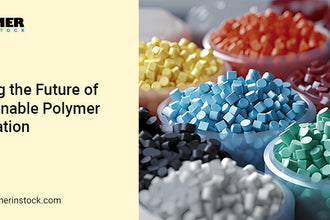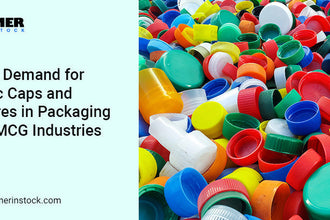
The global petrochemical industry is facing one of its toughest challenges in decades. What was once a symbol of industrial growth and material innovation is now under immense pressure from oversupply, shrinking margins, and the global energy transition. As producers struggle to balance capacity expansion with weakening demand, questions about the industry's resilience — and its ability to evolve — have never been louder.
For businesses, manufacturers, and traders following platforms like Polymer in Stock, understanding these dynamics is crucial. The polymer market in India and beyond is deeply tied to global feedstock trends, and today’s shifts could reshape the landscape for years to come.
The Oversupply Dilemma: When Expansion Backfires
Between 2020 and 2025, the global petrochemical sector added nearly 40 million tonnes of new ethylene capacity, while demand rose by just 27 million tonnes, according to recent data from Wood Mackenzie. This widening gap has pushed global utilization rates down to around 80%, a level that threatens profitability even for some of the most integrated players.
Massive capacity additions in China, the United States, and the Middle East have tipped the balance. Many of these projects were planned during years of strong demand growth, particularly before the pandemic, when petrochemical demand was rising 4–5% annually. But slower global GDP growth, stricter sustainability regulations, and rising use of recycled plastics have since changed the equation.
The result? An oversupplied global market, where producers are struggling to find buyers and maintain margins. Prices for core polymers like polypropylene (PP) and polyethylene (PE) have remained under pressure, even as oil prices fluctuate.
Regional Impact: East vs. West
The crisis is not evenly spread. Feedstock advantage has become the dividing line between survival and shutdown.
-
Middle East and U.S. producers, who rely on cheaper ethane and natural gas liquids (NGL) feedstocks, continue to maintain a cost edge.
-
Asian and European players, dependent on naphtha-based production, are under the most strain, facing higher input costs and tighter environmental regulations.
Several naphtha crackers in Europe and Northeast Asia are already operating at reduced rates or are considering closures due to sustained losses. In contrast, new mega-integrated complexes in China and the Gulf region are ramping up, worsening the oversupply situation.
For India, this dynamic presents a double-edged sword. On one hand, lower global polymer prices help domestic converters and manufacturers. On the other, it creates challenges for Indian producers and exporters who compete with cheaper imports.
Energy Transition: The Second Wave of Disruption
While oversupply is a clear and present challenge, the energy transition represents a deeper, structural transformation. The global shift toward renewable energy, decarbonization, and circular materials is forcing petrochemical companies to rethink business models built on fossil feedstocks.
Major global brands are setting aggressive recycled content targets, while regulators in Europe and North America are tightening plastic waste and carbon emission norms. The result: a mounting push for low-carbon, circular polymer solutions — something that legacy petrochemical systems were never designed for.
This transition is already visible in product demand. Traditional segments such as single-use packaging face declining consumption in some markets, while recycled polymers, bio-based plastics, and advanced chemical recycling technologies gain traction.
However, transitioning comes at a cost. Building circular infrastructure, securing recycled feedstock, and scaling low-carbon production technologies require billions in investment. Smaller producers, especially in developing regions, may find it difficult to keep up.
The Price Pressure on Polymers
The imbalance between supply and demand has led to significant price pressure across polymer categories:
-
HDPE (High-Density Polyethylene): Prices have softened due to excess availability from new plants in China and the U.S., despite healthy packaging demand.
-
PP (Polypropylene): Margins remain squeezed, particularly for naphtha-based producers, as lower-cost exports flood Asian markets.
-
PVC (Polyvinyl Chloride): Supported by resilient demand in construction and healthcare, PVC has shown relative price stability, trading between ₹67.5 and ₹147.5/kg in the Indian market.
-
PET and PS: Struggling with inventory buildup, with several regional producers announcing planned cutbacks.
This uneven performance reinforces the idea that polymer markets are now highly segmented, depending on end-use industries, regional supply chains, and sustainability shifts.
India’s Role in the Global Equation
India remains one of the fastest-growing polymer markets, driven by expanding consumption in packaging, automotive, electronics, and infrastructure. Domestic demand continues to rise at 6–8% annually, well above the global average.
While this makes India a critical demand center, it also means local buyers and converters are directly affected by international volatility. For platforms like Polymer in Stock, which track real-time market trends, the message is clear: global supply shocks, plant turnarounds, or geopolitical shifts can quickly ripple through Indian pricing structures.
Moreover, as India’s sustainability regulations tighten — with EPR (Extended Producer Responsibility) norms and growing recycled content mandates — the local polymer ecosystem will need to evolve in step with global decarbonization trends.
Sustainability and Circularity: The Industry’s Lifeline
The petrochemical industry’s long-term survival will depend on how effectively it integrates sustainability and circular economy principles into its core operations.
Leading companies are already investing in:
-
Mechanical and chemical recycling to recover value from post-consumer waste.
-
Bio-based feedstocks to reduce reliance on fossil fuels.
-
Carbon capture and utilization (CCU) projects to mitigate emissions from existing facilities.
These moves, while promising, remain limited in scale. To truly shift the curve, the industry must collaborate across the value chain — from resin producers to converters and brand owners — ensuring that recycled and sustainable materials become commercially viable alternatives.
For Indian manufacturers and traders, this transformation also represents opportunity. Investing early in recycled resin solutions, waste collection infrastructure, and sustainable polymer sourcing could unlock competitive advantages in both domestic and export markets.
What Lies Ahead: Adapting to the New Normal
According to Wood Mackenzie, the petrochemical industry’s recovery could take until 2026 or beyond, as global demand slowly catches up with capacity. Even then, the growth will likely look different — more fragmented, slower, and driven by sustainability imperatives rather than pure consumption.
To navigate this new normal, industry stakeholders should focus on:
-
Diversifying supply chains – Reducing dependency on single-region suppliers.
-
Embracing recycled materials – Aligning with evolving global regulations.
-
Monitoring feedstock shifts – From naphtha to gas and bio-based inputs.
-
Investing in efficiency and digitalization – To lower costs and enhance traceability.
-
Building resilience – Through smarter procurement, flexible contracts, and sustainability-driven partnerships.
The next decade will define which companies survive — and which fade away.
Conclusion: Crisis or Catalyst?
The Global Petrochemical Market Crisis of 2025 is not just a story of excess supply or shrinking margins; it is a defining moment of transformation. The pressures of oversupply, sustainability, and regulatory change are reshaping the very foundation of the industry.
For businesses, traders, and manufacturers using Polymer in Stock to monitor polymer prices and trends, this period offers both caution and clarity.
Those who adapt — embracing innovation, circularity, and efficiency — will not just survive the downturn; they will lead the next era of the global polymer economy.



 +971 509205838
+971 509205838







